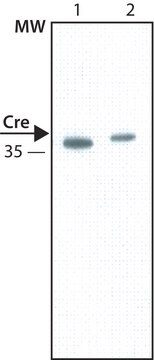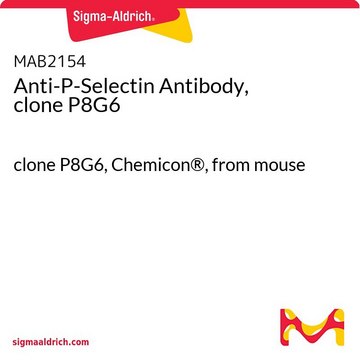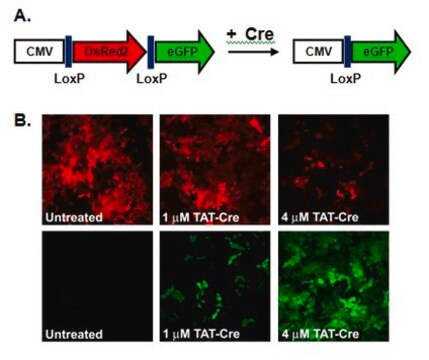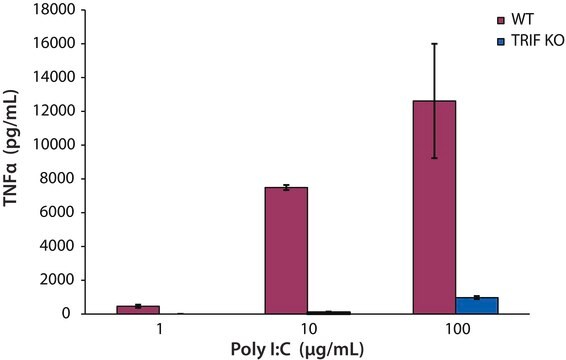MAB3120
Anti-Cre Recombinase Antibody, clone 2D8
ascites fluid, clone 2D8, Chemicon®
Synonym(s):
Anti-Cre Antibody
About This Item
Recommended Products
biological source
mouse
Quality Level
antibody form
ascites fluid
antibody product type
primary antibodies
clone
2D8, monoclonal
species reactivity (predicted by homology)
all
manufacturer/tradename
Chemicon®
technique(s)
ELISA: suitable
immunocytochemistry: suitable
immunofluorescence: suitable
immunohistochemistry: suitable
western blot: suitable
isotype
IgG1κ
UniProt accession no.
shipped in
dry ice
target post-translational modification
unmodified
Gene Information
Escherichia coli ... Cre(2777477)
General description
Specificity
Immunogen
Application
Epigenetics & Nuclear Function
Cell Cycle, DNA Replication & Repair
A 1:500-1:5,000 dilution was used in a previous lot. Natural Cre recombinase from Bacteriophage P1 migrates at 38.5 kDa by SDS-PAGE.
Immunofluorescence:
A previous lot of this antibody was used on IF.
Immunohistochemistry:
A 1:500-1:5,000 dilution of a previous lot was used in IH.
ELISA:
A 1:500-1:5,000 dilution of a previous lot was used in ELISA.
Optimal working dilutions must be determined by the end user.
Target description
Physical form
Storage and Stability
Analysis Note
HeLa Nuclear Extract
Legal Information
Disclaimer
Not finding the right product?
Try our Product Selector Tool.
Storage Class Code
10 - Combustible liquids
WGK
WGK 1
Flash Point(F)
Not applicable
Flash Point(C)
Not applicable
Certificates of Analysis (COA)
Search for Certificates of Analysis (COA) by entering the products Lot/Batch Number. Lot and Batch Numbers can be found on a product’s label following the words ‘Lot’ or ‘Batch’.
Already Own This Product?
Find documentation for the products that you have recently purchased in the Document Library.
Our team of scientists has experience in all areas of research including Life Science, Material Science, Chemical Synthesis, Chromatography, Analytical and many others.
Contact Technical Service








